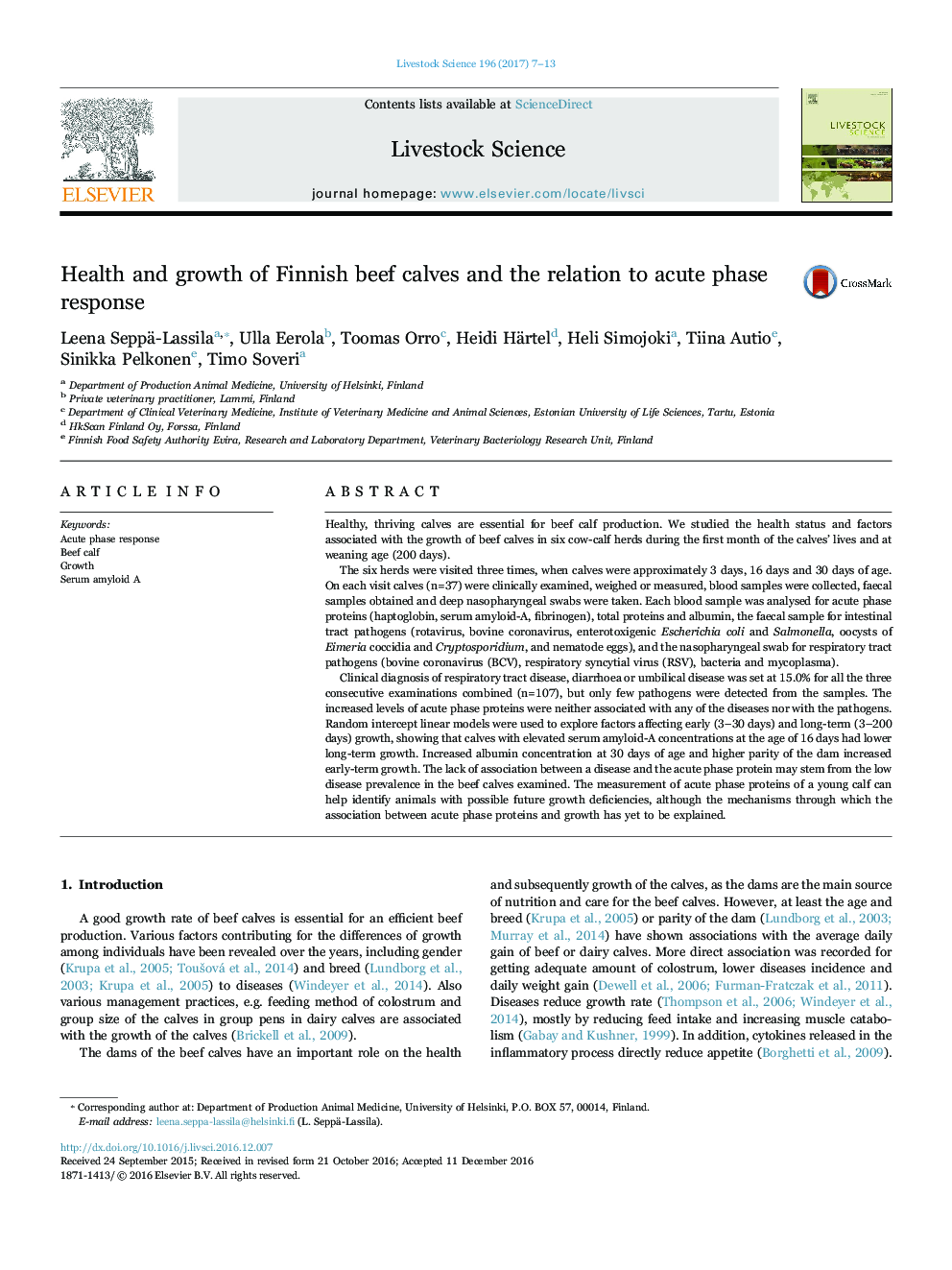| Article ID | Journal | Published Year | Pages | File Type |
|---|---|---|---|---|
| 5542960 | Livestock Science | 2017 | 7 Pages |
Abstract
Clinical diagnosis of respiratory tract disease, diarrhoea or umbilical disease was set at 15.0% for all the three consecutive examinations combined (n=107), but only few pathogens were detected from the samples. The increased levels of acute phase proteins were neither associated with any of the diseases nor with the pathogens. Random intercept linear models were used to explore factors affecting early (3-30 days) and long-term (3-200 days) growth, showing that calves with elevated serum amyloid-A concentrations at the age of 16 days had lower long-term growth. Increased albumin concentration at 30 days of age and higher parity of the dam increased early-term growth. The lack of association between a disease and the acute phase protein may stem from the low disease prevalence in the beef calves examined. The measurement of acute phase proteins of a young calf can help identify animals with possible future growth deficiencies, although the mechanisms through which the association between acute phase proteins and growth has yet to be explained.
Related Topics
Life Sciences
Agricultural and Biological Sciences
Animal Science and Zoology
Authors
Leena Seppä-Lassila, Ulla Eerola, Toomas Orro, Heidi Härtel, Heli Simojoki, Tiina Autio, Sinikka Pelkonen, Timo Soveri,
